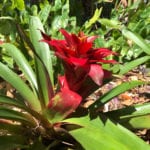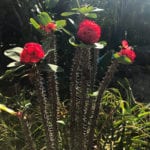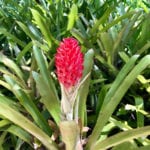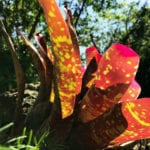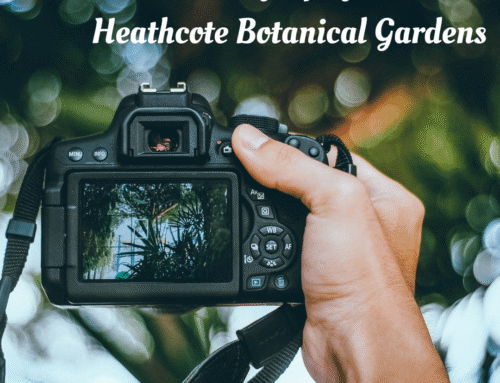The Gardens are looking lovely and there is a wonderful assortment of “red” (or close to it) throughout the grounds right now.
From the red Amaryllus in the parking lot, to the blooming Bougainvilla in the Bonsai Garden, there are many beautiful plants and flowers to find everywhere.
- Guzmanija lingulata bromeliad
- Guzmanija lingulata bromeliad
- Amaryllus
- Philodendron
- Eucrosia bicolor
- Crown of Thorns
- Billbergia pyramidalis bromeliad
- Billbergia pyramidalis bromeliad
- Bougainvilla Bonsai
- Neoregelia Aztec bromeliad
- Desert Rose
Fun Facts:
Guzmanija lingulata: The genus was discovered in 1802 and named after the Spanish botanist A. Gusman.
Amaryllus: Cultivation of amaryllis started in the 18th century. There are more than 600 varieties of amaryllis today. South Africa and Holland are among the greatest manufacturers of amaryllis in the world.
Philodendron: Always allow the top 50% of the soil to dry out before watering.
Eucrosia bicolor: Native to Ecuador and Peru. This species grows very well in tropical climates. It was the first species of Eucrosia to be scientifically described, in 1816, and the first to be introduced into cultivation in Europe, flowering outside its homeland for the first time in 1817.
Crown of Thorns: Currently, all varieties are listed on Appendix II of the Convention on International Trade in Endangered Species (CITES), meaning that international trade in wild grown plants should be carefully monitored.
Billbergia pyramidalis: Commonly known as the Flaming torch, is a species of bromeliad that is native to Brazil, Venezuela, French Guiana, the Lesser Antilles and Cuba. When planted at the base of a tree, they slowly will climb the trunk.
Bougainvilla: The beautiful bougainvilla is listed as one of the top 10 flowering bonsai trees to grow. Discovered in Brazil during French Adm. Louis de Bougainvillea’s 1768 voyage, these plants were named in his honor.
Neoregelia Aztec: This tropical epiphyte thrives with humidity, often going two weeks without supplemental water.
Desert Rose: It has no thorns and it is totally unrelated to the rose family – it doesn’t really even look like one.



